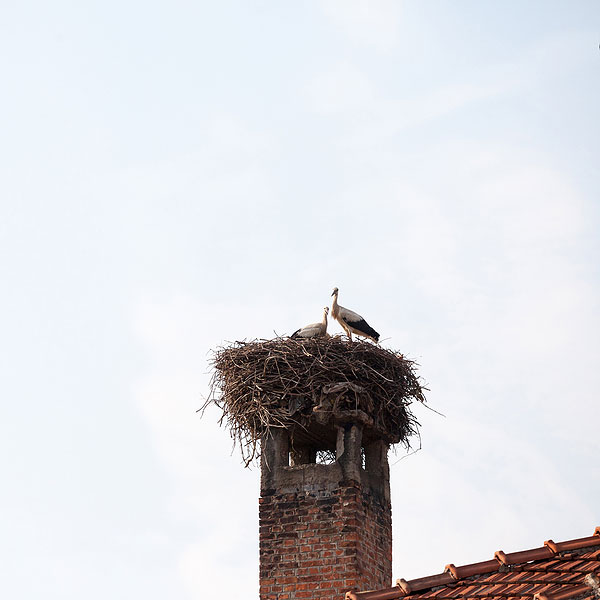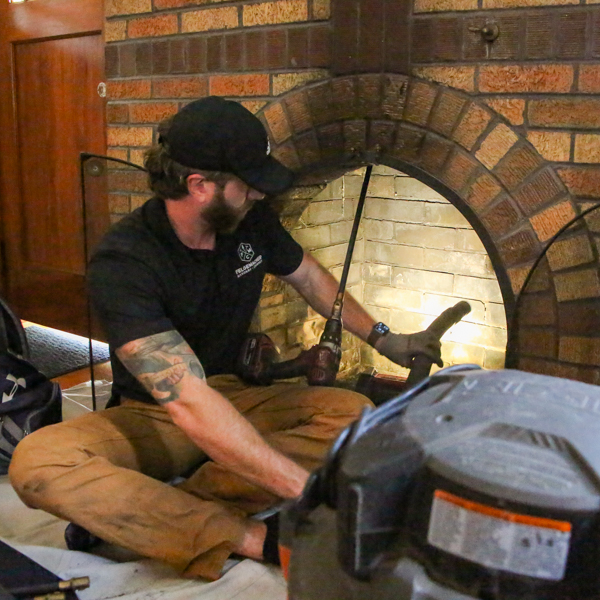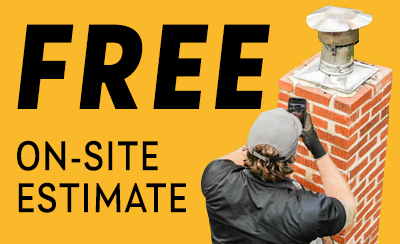Common Fireplace Problems that Affect Its Functionality
Your chimney needs an ample supply of oxygen to maintain a productive fire in the fireplace. As it breathes in oxygen to fuel the fire, it must also effectively expel smoke and harmful gases from your home so you can use your fireplace safely. However, homeowners in Buffalo, Rochester, and Western New York need to look for several common fireplace problems that affect its functionality.
 Flue Obstructions
Flue Obstructions
A flue obstruction is one of the most common problems for homeowners in Western New York. It can occur when leaves, twigs, and debris from nearby trees are blown across the roof, landing in the flue or around the chimney cap.
During the cold winter, neighborhood critters looking for a place to rest can climb into the chimney through a small hole in the masonry or a damaged or missing chimney cap. When the flue is obstructed, it restricts the venting of smoke and harmful gases from the fireplace.
In addition to reducing your fireplace’s efficiency, a severe blockage can cause a dangerous backdraft that pushes plumes of smoke, soot, ash, and carbon monoxide fumes into your living area.
Creosote Buildup
Another fireplace problem that can affect performance is creosote build-up. Every wood-burning fireplace produces creosote, a natural by-product of combustion. The problem with creosote is that it accumulates and gets increasingly dangerous the longer it remains in the chimney. It eventually hardens into a dark, tarry, and crusty material that is highly flammable. In fact, it is the primary cause of house fires. Even if you frequently sweep the chimney yourself during the winter, it’s challenging to get it all out without the professional tools of a Certified Chimney Sweep®. So, some creosote deposits may remain in the chimney. That’s why professional chimney cleaning is essential.
Masonry Cracks
During the winter, bouts of rain and snow and the freeze-thaw cycle can take their toll on masonry chimneys, causing cracks in brick and mortar. Air and moisture can squeeze through even the most minor cracks, affecting chimney draft. As a result, you may notice a gradual reduction in heating efficiency. Still, as the masonry cracks expand, it can cause drafting problems that make it difficult to light the fireplace or maintain a productive fire. Also, masonry cracks can increase the risk of fire and exposure to carbon monoxide gas. The spalling bricks and decaying mortar can also cause bricks to loosen and fall from the chimney, leading to structural problems.
Damaged Damper
When you have a fire burning in the fireplace, it is vital to leave the damper open. However, closing the damper when the fire burns out reduces heat loss and increases energy efficiency. However, if the damper is damaged, it won’t create an airtight seal when shut. This allows the cold outside air to mingle with the heated indoor air, wasting all the energy you produce increasing heating costs. During the warm summer months, your cooling costs rise as the conditioned air in your home escapes through gaps in the damper and chimney.
 Preventing Common Fireplace Problems
Preventing Common Fireplace Problems
One sure-fire way to prevent common fireplace problems is annual chimney inspections and cleaning. The National Fire Protection Association (NFPA) says that homeowners with solid or fossil fuel appliances like gas or wood-burning fireplaces and heating stoves have yearly chimney inspections and cleaning when necessary.
At Felgemacher Masonry and Chimney, our CSIA-Certified Chimney Sweeps will ensure your chimney and fireplace are safe to operate. Our certified technicians can also make necessary repairs to improve fireplace safety and performance—Call 716-907-4914 in Buffalo or 585-308-4914 in Rochester. You can also contact us online to schedule an appointment today!



